Yoga for Everyone: A Beginner's Guide.
You have recently gained an interest in Yoga, do you feel that it intrigues you but you don't know where to start?
Those who feel attracted to this discipline start for different reasons, sometimes vague, sometimes more specific: perhaps to have a more flexible body, lose weight, dissolve the stress and tensions of the day, manage our emotions or get to know ourselves at a deeper level. For me, it was a broken heart and ever since yoga has supported my day-to-day emotional health more than ANYTHING else I have found. No matter what leads you to your mat, EVERYONE starts somewhere, whatever the reason, and it is not the beginning but the path (and the way we deal with it) that makes the difference and that will then determine our - possible - evolution.
An aspect that concerns some who begin the journey of diving into the vast discipline of Yoga is confusion. Some common questions include:
What type of class do I choose?
Am I doing the right thing in my body?
Should it feel this way?
What do you mean by warrior 1 and downward dog? I’m human.
Is this a religion?
Why do I feel this here?
Why am I emotional during class?
I am not flexible, can or should I still do yoga?
What does Namaste mean?
Will I ever be able to touch my toes? Is that important?
Will I die in hot yoga?
I could go on and on. There are so many practices, styles, and teachers, each different from each other and sometimes in almost opposite ways. How is it possible to orient oneself in all this vastness of choice?
I still remember a conversation from years ago, when I told a friend of mine about my first hot vinyasa class, and this was her response: "Why? I did a" very boring "Yoga class ONCE that made us stay in the same position for what felt like forever and you tell me that you did another one where you didn't stop for a second? How is it possible?"
It is normal for these doubts to arise, especially if you are at the beginning of a path that offers many benefits, intentions and options.
Yoga for beginners
And that is why it is so important, in the beginning, to have a perspective of what yoga really is and why it gives certain benefits, even before practicing it. In this guide, I will give you the necessary information that will help you to have reference points to move and direct your path, and simplify.
We will therefore immediately apply one of the basic principles of Yoga, which is:
Doing the essentials, the minimum we need, but in an intelligent way, to get the best result.
But before I start reading, I ask you to do one thing:
Take a moment now to close your eyes, take a few breaths and forget everything you know about what you have been told, what you have known or what you have read about yoga so far. Keep an empty space inside you to welcome, with curiosity, everything that is different, compared to what you had imagined, you will understand by reading this guide. When you are ready, open your eyes and begin to approach this new knowledge just like a child eager to know, and nothing more.
Getting Started: How To Start Doing Yoga
As mentioned before, each of us has our own path. Sometimes the practice of yoga enters our life quietly and other times it roars in with full intensity because our body, mind or emotional selves need it, either way, there is nothing wrong with that. The most common mistake is to approach yoga thinking that everything is the same, discontinuing our practice if we don't like a lesson. I recommend not to limiting yourself to a single experience. To understand yoga in all its facets it is necessary to make many attempts because we do not always find what we need at the first try.
So the first step is to experiment.
In this case, curiosity is fundamental, as well as stopping to listen to oneself and understand what is happening inside us.
As already mentioned at the beginning, there are many styles that refer to the "physical" type of yoga, the one we are most familiar with here in the West. Hatha Yoga. Vinyasa Yoga, Hot Yoga and more! I recommend trying as many different types of yoga classes, teachers and locations as possible. Different teachers have different ways of communicating the practice and you may really connect with one and not with another. If you don’t want to try as many styles as possible or simply you can’t do it right now, start with yin or restorative yoga, perfectly suitable for beginners and then, over time, you can experiment with other yoga styles. There are SO many beginner classes out there for every style of yoga. Be brave to try new thongs. You may just surprise yourself as to what is possible for you.
Yoga tools to practice at home
Whether you practice yoga online or in a studio, I recommend that you have your own yoga mat, as it is more hygienic. There are many types of mats, but I recommend a non-slip one as well, in addition to serving as a cushioning support, you will prevent your hands and feet from slipping on it. You will see how it is worth the investment because your mat is the basic tool in your practice and will accompany you for a long time. Likewise, there are other basic yoga materials that can help you to be more stable and aligned in the different postures:
One or two blocks of yoga can help you explore the different postures and feel more comfortable and aligned in them.
A zafu cushion for your meditations will allow you to raise your pelvis and hold you in the meditation posture with your spine more upright and your hips more relaxed.
A yoga strap is an accessory that can be of great help to people with little flexibility, although it is also very useful for entering advanced postures.
For heated yoga, you may be interested in a non-slip towel the size of the mat, which you can easily wash later.
Useful tips
Starting to practice yoga creates a noticeable change in the body, it increases physical flexibility, awareness and mental concentration. You are a beginner, many sequences seem impossible at first glance, the important thing is to remember that there is no rush: an exercise will not succeed the first time and not even the second, maybe the third will go better. There is no need to exaggerate, yoga must be a moment of peace and tranquillity with your body, nothing compares to others, stay focused on yourself and your breath.
Keep these three words in mind when you start practicing yoga:
Calm
Present
Balanced
Breath
Yoga is for everyone! We just need to find the right style and teacher for us, who adapts to this moment of our life (and it doesn't always happen on the first try!). I want to emphasize the phrase "this moment" because as you have already learned, yoga is your own personal experience, unique to you. And being yourself in constant change, growth and evolution, it is normal for the practice to change and keep up with you as well. There is no need to feel guilty if, at some point in your life, you feel you want to change a certain style that you have always practiced. The same thing goes for the teacher: there are times when one teacher will resonate more, at other times another. It is perfectly normal and right that this is the case, one should not remain attached to a single teacher or a single style for life. Yoga always puts you to the test, which is why inner listening is so important. We just need to be able to choose and assimilate what we need to make it ours and continue on our path.
Online or live lessons?
If you can't find a suitable studio or place to practice in your city, you can experience classes through online lessons. I recommend classes that are as basic as possible for beginners.
"But isn't the live lesson better than a video?"
The face-to-face lesson is important because the teacher can correct you, but from the point of view of building a habit it is also very useful to practice at home through video lessons. If you listen to your body, warm up well before starting and practice a fairly quiet yoga style (such as Hatha or Yin Yoga) by listening carefully to the directions given, it is practically impossible to get hurt!
Live your yoga practice as a journey to take one step at a time, one breath at a time and you will fully immerse into an amazing explorative experience into the self, mind body and soul.
Starting a practice is that simple, you don’t need a lot to get started, the biggest thing is commitment. Make a commitment to yourself. If in the beginning, you want to start with 5-minute classes do that, then maybe, over time you expand to 10 minutes and so on. Maybe you work yourself up to a 75-minute class and realize that your sweet spot seems to be 45 minutes.
Yoga means union and the easiest way to understand that is union of mind and body. So whenever you are connected to your body and mind you are doing your yoga. It doesn’t have to be in a fancy studio or on a mountain top, it doesn’t have to be an hour-long commitment, it can be 5 minutes as you get out of bed and you mindfully breath and move your body. This is your unique yoga.
If you ever have any questions please reach out at jill@yogiinstitute.com. I would love to hear from you and I love sharing my passion for this practice with others.
Start today in the Yogi Institute On Demand Library! https://app.arketa.co/yogiinstitute/on-demand

